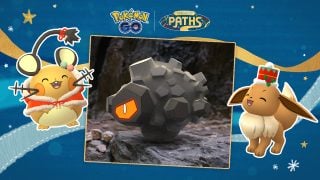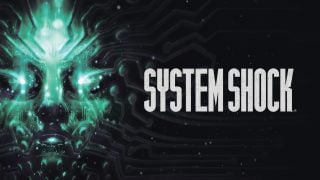Mid-2017, I had just returned from living abroad. While happy to be reunited with friends and family, I missed the country and city that had become my second home. Thankfully I had a little slice of Japan to dive back into by the name of Persona 5, a game that left a lasting impact on myself, and gaming as a whole. Now, Atlus and their accomplices at Koei Tecmo have teamed up to give us all a little something we all likely miss – our travel plans.
Joker, the Phantom Thieves of Hearts, and their picaresque flair are finally on Switch courtesy of Persona 5 Strikers. They’re bringing fast paced combat, familiar Persona mechanics, and a new story; all wrapped up in their signature style and a summer vacation across Japan. It might hit some overly familiar beats and have some pacing issues, but this is still its own kind of showstopper and one of the best Warriors-style games I’ve played in a long time.
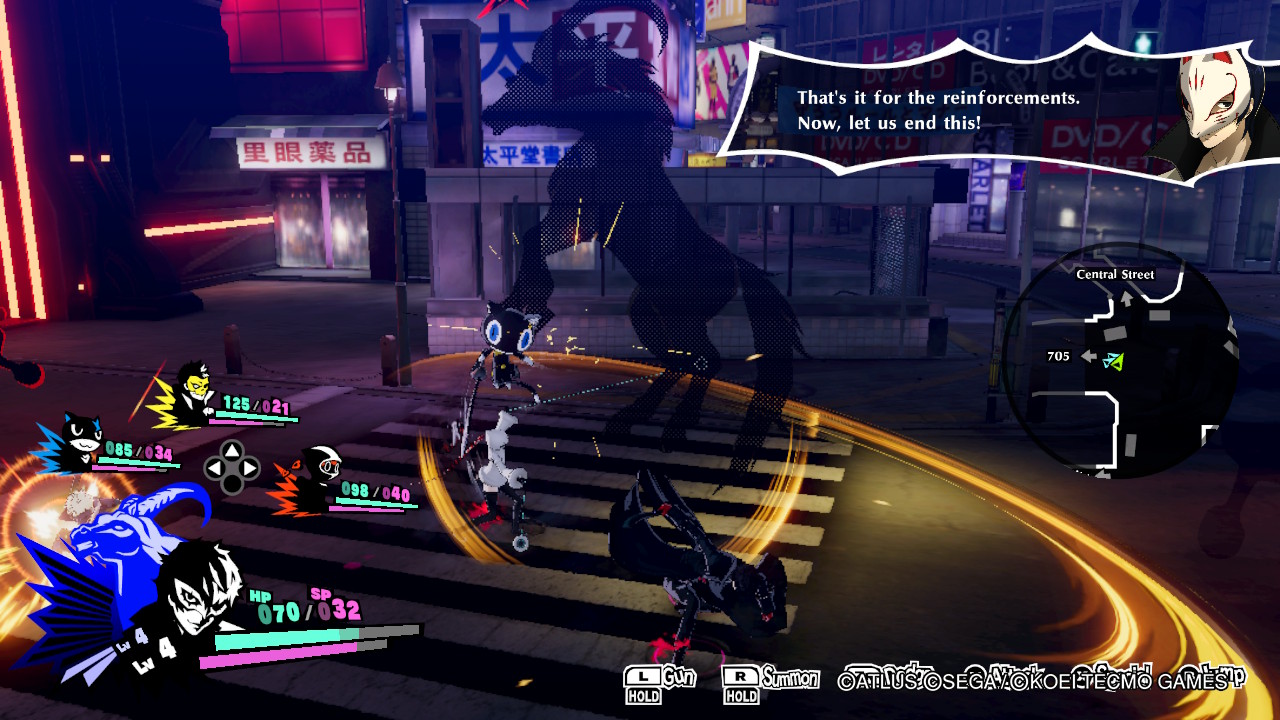
Strikers reunites the Phantom Thieves for summer vacation, placing and pacing the game’s events over the span of a single month. Joker’s back in town, with friends welcoming him with open arms as they work out their plans with a new virtual assistant named EMMA. Soon though they realize that things aren’t quite right with this app, that draws them back into the cognitive world of Palaces.
This time around though they aren’t stealing Treasures to change hearts, but instead infiltrating Jails to return stolen Desires to the people. It serves as an excuse both to get the Thieves back to what they do best and to play with familiar ideas in new ways. Much of this is introduced and clarified in the games opening hours, making things a bit exposition heavy out of the gate before the gameplay really picks up.

This is all a significant trimming from the typical months-long timeframe of the series proper, but time only passes for story reasons. No more trying to figure out the best use of finite days, or pushing yourself to explore the Metaverse for as long as possible before leaving. This allows you to work on optional Requests at your leisure, as well as grind or experiment with new Personas.
In fact, you can come and go from the game’s Jail dungeons as your please, a concept that took a while for me to ‘get’. It almost felt wrong popping out to heal and restore SP, but it does wonders for letting you play on your terms versus the game’s. Even without that, healing and restorative items are easily accessible either from various shops or cooking recipes in Joker’s Kitchen.
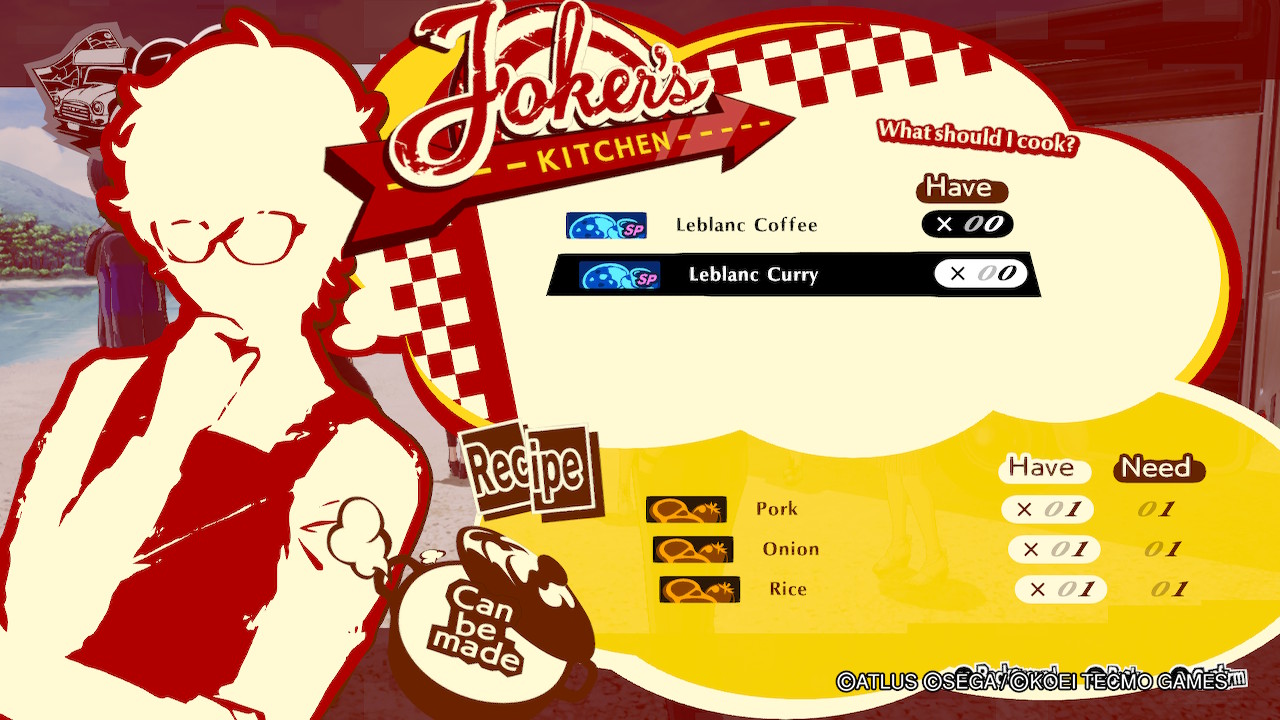
If anything, the game’s items serve less for healing purposes and more for capturing the vibe of the various Japanese cities you’ll visit. Regional dishes and snacks are but one of the ways that P5S makes the most of its country-wide caper. Various landmarks and tourist destinations (or at least royalty-free stand-ins for them) pepper the dialogue and story moments. Having visited and even lived in one of the cities featured in the game, it nails the vacay vibes and cultural shout-outs for its larger locales.
They may only be backdrops to the story and hubs to check between the action, but I couldn’t get enough of Strikers’ tour of Japan. While the core narrative hangs above the whole experience and drives the cast, some of the best moments come from these teenagers just getting to relax and be teenagers. It’s a shame there aren’t minigames or activities to further embrace that, but it still mimics the original game’s excitement in adding more corners of Tokyo to your list of destinations.
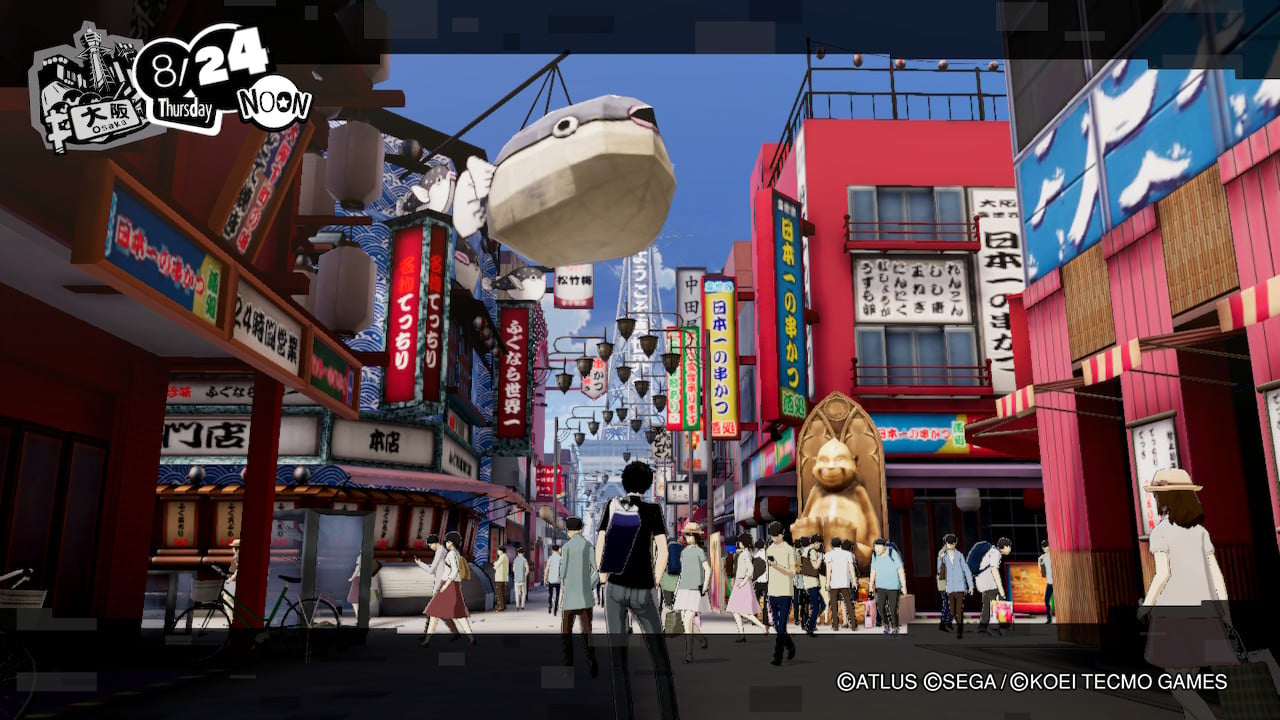
While the likes of Osaka and Sapporo get the full treatment, a few places in the game are a bit more minimal. One was basically a single cutscene, while others offer briefer Jails tied more to the plot than the places themselves. This would be fine if it were for pacing reasons, but it was in those moments that the game decided to lay on cutscene after cutscene. I sat through what felt like an hour of these back to back right in the middle of the game. This won’t be too unfamiliar for Persona fans but it does contrast the more actionized gameplay.
It’s also worth noting that for its first half, Persona 5 Strikers sticks to a certain formula: Arrive in a city, learn about a Monarch and their Jail, reach three key points therein, infiltrate to learn their history, calling card, boss. This idea of a recurring pattern to its parts is one that comes up in each of the modern Persona games, but consider yourself warned if you’ve yet to experience them.
That amount of story content does a lot to make Strikers feel like a full on sequel to Persona 5 rather than a spin-off, but a few core pieces get lost in the process. Social Links are gone, as are the deeper and more focused looks at your comrades and confidants. As such every cast member is reduced a bit to their bare essences rather than the flawed and investable portrayals from their origin. That does make sense (as a sequel, they’d have already gone through their development) but it’s a shame that the Phantom Thieves as people are sidelined for the Phantom Thieves as a group.
That said, they’re a fun group to hang with. They know how to get down to business, but this is still their summer vacation and they’re living it up. There were legit laugh-out-loud moments, and everyone does get at least one big chance to remind you why this gang means so much to them. And hey, you don’t have to rush to max out your relationship with Haru this time!
The lack of Social Links doesn’t mean you can’t work on those friendships, though. A new Bond system is in place, building up both over the course of the game and by taking the time to chat with our friends or help them out when necessary. The points you gain from this let you unlock passive increases to your abilities (like longer buffs and debuffs, or after battle healing) or grant you access to things like locked treasure chests and better recipes.
Instead of who we already know and love, Persona 5 Strikers goes in on its newcomers. Sophia, a sentient AI that lives in Joker’s phone, is an early addition to their ranks and manages to endear herself quickly. She doesn’t have the most prominent role through a large portion of the game, but her goal to understand humanity and discover what (and who) she is becomes much more relevant later on.
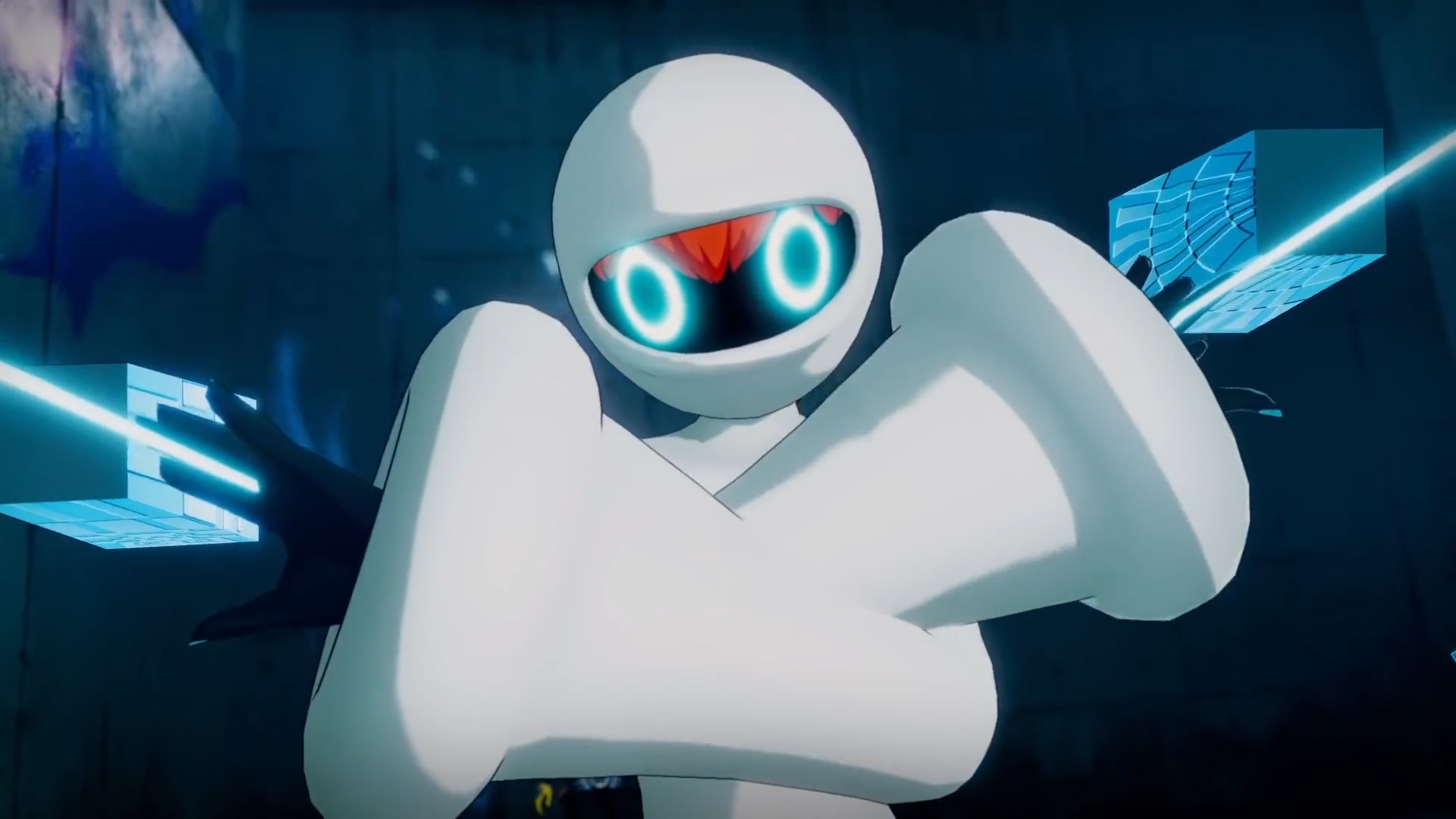
We also get plenty of time with Zenkichi Hasegawa, a police inspector that’s shadowing the party. Naturally Joker and crew aren’t too up for working with law enforcement, but learning more about Zenkichi and his motives alongside them carries a good portion of the game as well. Their openness to distrust and disparage him is pretty amusing, though, and his role works off of players’ expectations of adults in this series well. Not to spoil, but he also gets one of the game’s best moments pretty much all to himself.
Perhaps my biggest criticism towards the game as a whole is how familiar everything is on a plot level. Despite the new surroundings, nearly every scenario feels evocative of something that happened in Persona 5. For example, starving artist Yusuke once again confronts someone profiting off the creative work of others, both openly and thematically calling back to his introductory arc in P5. While I wasn’t expecting a rich narrative on par with the original, it’s a shame to retread that ground so frequently.
For anyone coming into Persona 5 Strikers without having played the first game, you won’t have that same experience. Instead you’ll have this abridged take on the characters and glimpses at their more engrossing arcs and journey. As for anyone expecting characters appearing in Royal, I’m sad to say that Strikers doesn’t deliver there.
What it does have, though, is enjoyable and faster gameplay as its backbone. I’ve no problem with the Shin Megami Tensei turn-based system, but giving me an actionized Warriors spin off is the perfect pairing. More than One Piece, more than The Legend of Zelda, Persona 5 has fittingly taken the heart of the musou gameplay and made it its own.
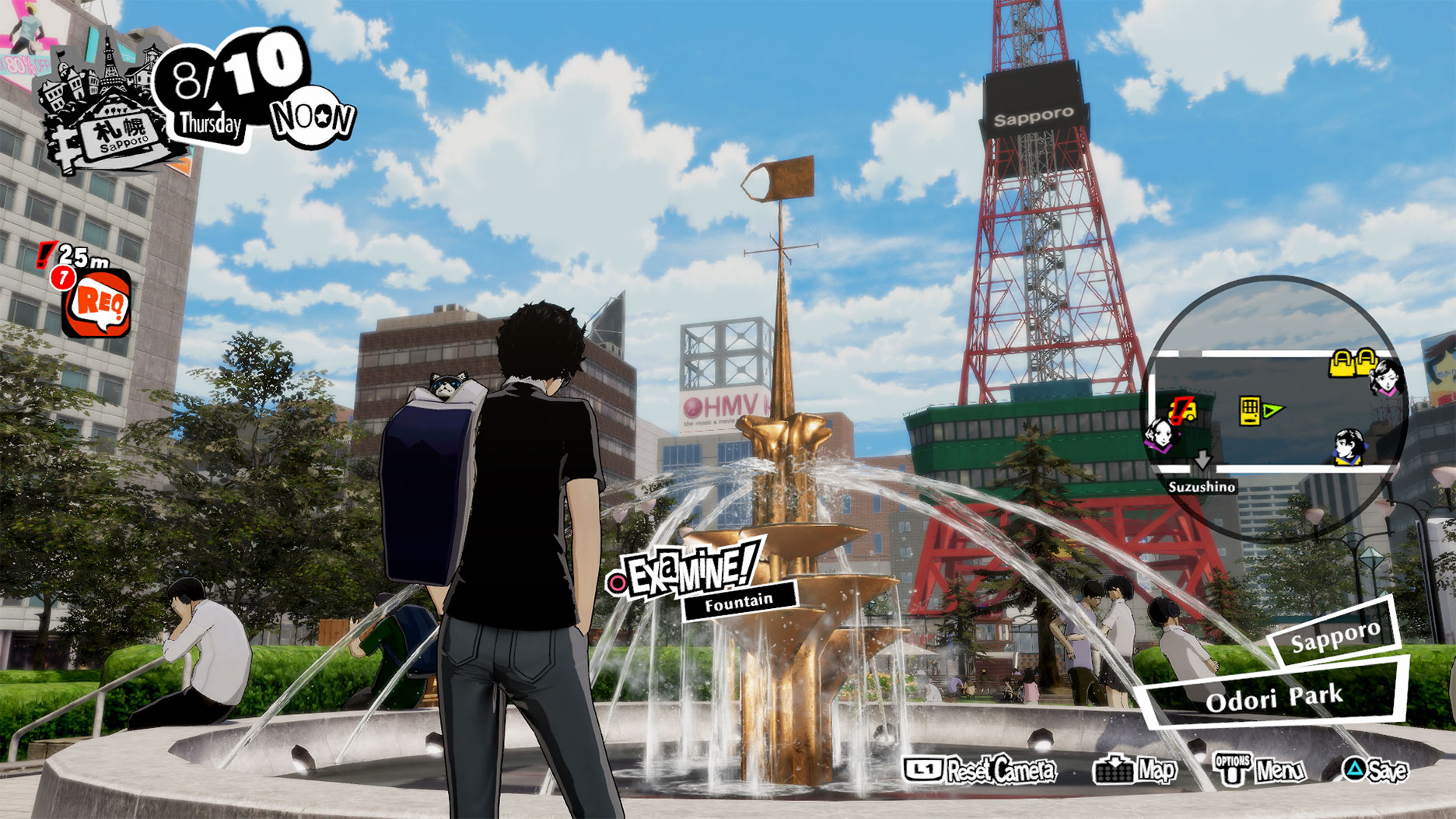
I have to emphasize just how little of the typical Warriors experience is here. There’s no holding off hoards as you defend sections of a map, no running from one place to another just to make sure an ally doesn’t fall, and no repetitive grinding to maximize a massive cast of characters. This is not a Warriors game with Persona characters, this is a Persona game with Warriors combat.
So, what exactly does that mean?
Just like in Persona 5 you’ll be making your way through the Jails, darting from hiding spots and vantage points to ambush Shadows. Once you do, they’ll go from a single foe to a group of series-familiar demons for you to cut loose on.
Fun fact I learned in Strikers – a group of Jack Frosts is called a hee-horde.
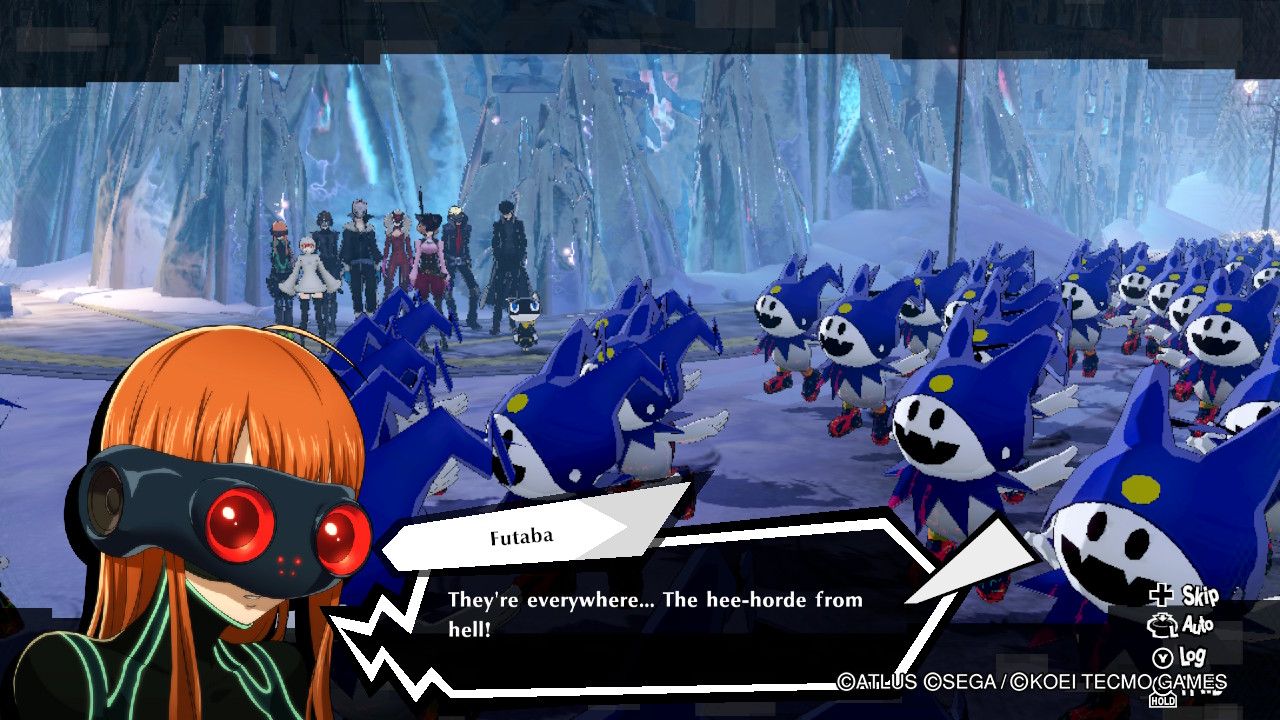
These fights are as stylish as they are addicting, rewarding you for understanding how to exploit weaknesses and properly spec your party. You’re allowed four characters on the field at once, fully playable and swappable at any time with the push of a D-Pad direction, letting you cover multiple kinds of magic elements and skills to suit the enemy types in a Jail.
You’ll not just have each character’s signature weapon, but their own guns as well. Wielding these in tandem with the ability to leap off of and attack with environment elements lets you approach situations in various ways. It’s the Personas that really make the game unique though, and by holding the R button you’ll stop the action while you summon your character’s other self. This gives you the time you need to choose the right skill or spell, and makes you feel even more like a Stand user.
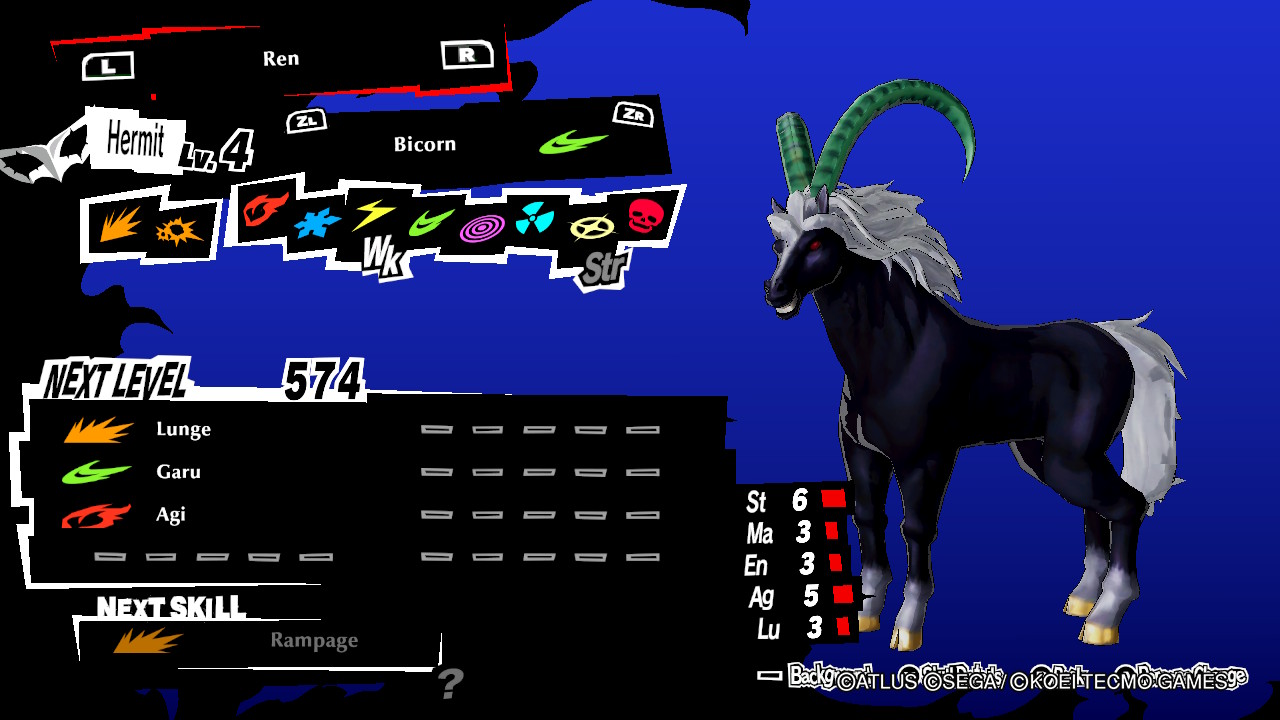
Fittingly for our lead rebel, Joker gets to break the rules and wield multiple Persona thanks to his Wild Card ability. By collecting, leveling, and fusing Personas he can basically do anything you need him to do with enough planning. If you’re not so into Persona management, you can just as easily rely on your teammates to handle things, but it’s a testament to how much this game wanted to get the Persona series right that the hero isn’t just locked to his trademark Arsène.
The expected Warriors combo system, of light and heavy attacks and character gimmicks, is here and fits each of the Phantom Thieves (minus unplayable navigator Futaba) well. Thanks to the gameplay they also aren’t as boxed in to their RPG roles (like Morgana as a mage/healer, Ryuji as a physical powerhouse) and are more defined by their weapon type. They still have their specialties, but switching from one to the other is more about understanding their movesets than picking the right skill.
From a Warriors perspective, it is unfortunate that the cast’s list of techniques doesn’t grow all that much. You do gain additional abilities (like Joker being able to mark an enemy with his gun to swoop in for a follow up attack) but it did feel like everyone’s combo tree was fairly small. This is compensated by the Persona movesets and mechanics, which are actually interwoven at the end of certain combostrings, so it does balance out once you get the hang of things.
One other unfortunate loss from most Warriors games is the roster size. You’re running wild with less than ten characters overall, and with the game having been out in Japan for over a year already there’s no sign of any DLC development for the earlier mentioned Royal additions or characters from other Persona titles. This is the Phantom Thieves’ show and they’re not about to be upstaged.
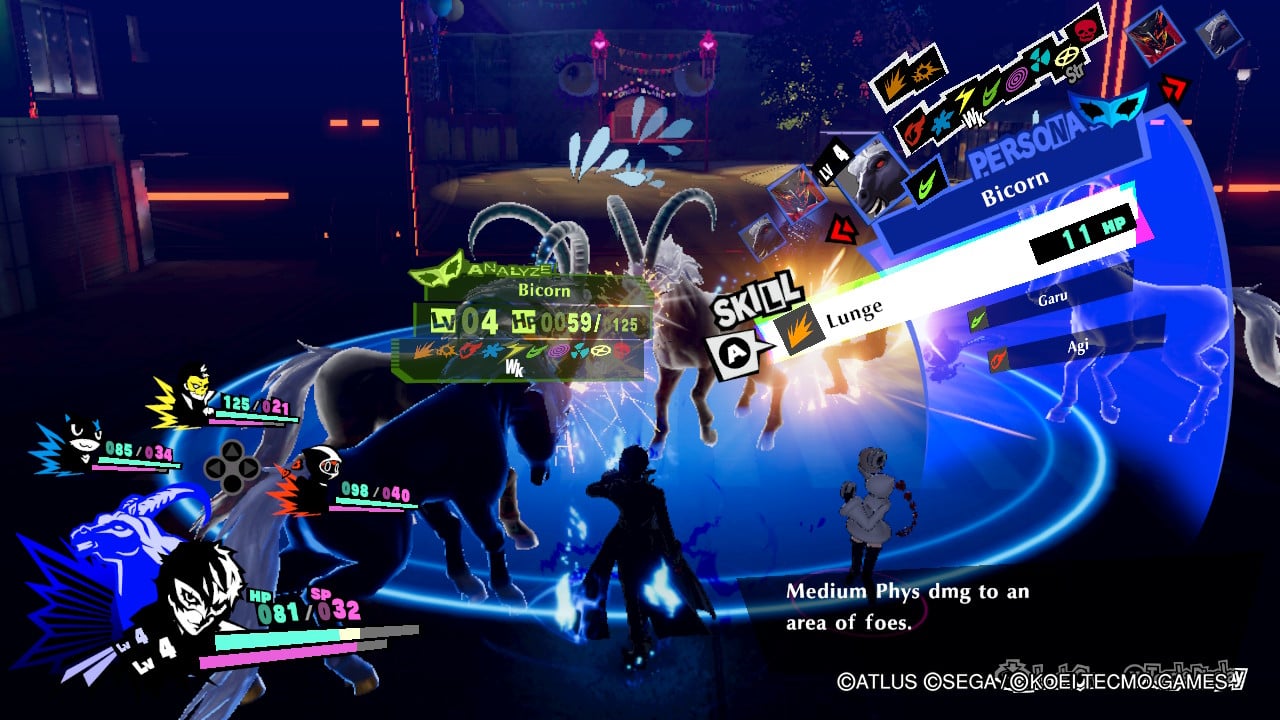
Still, this too is balanced out by the Velvet Room’s familiar (though thankfully simplified) Persona Compendium. And that really is the core of Strikers’ gameplay – it’s simplified and streamlined on both fronts to offer the best of these two games and developers. The pairing works just as well as curry with coffee, and for all it does well it’s easily one of the first must play Switch games of 2021.
It’s also a must see and hear game, too. Everything you love about Persona 5’s menus is back in Strikers. The UI is just as eye-catching and transitions are smooth and full of character. Sophia’s shop menu in particular is a favorite, both for how it looks and its theme.
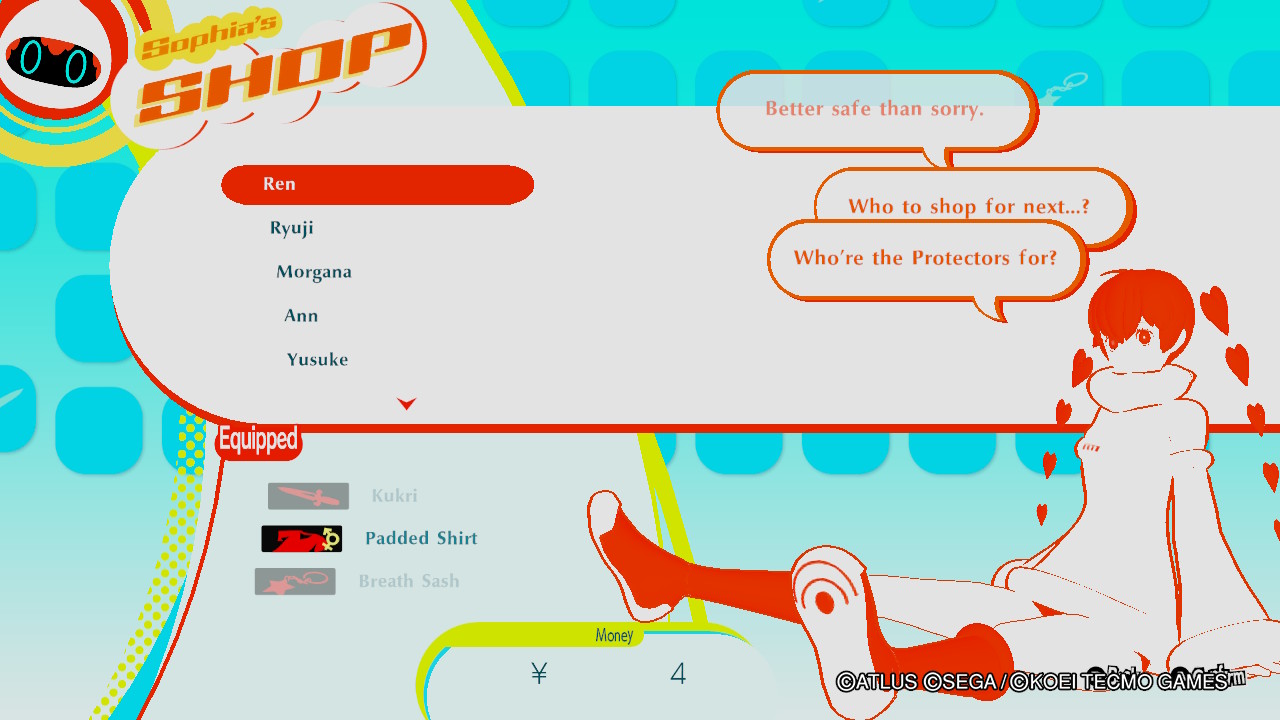
Speaking of themes, the music of Persona 5 Strikers delivers in multiple ways as well. There are new compositions to enjoy, like the aforementioned shop theme and its own infiltration music ala Life Will Change. I’ve also gotta shout out the music for walking around Sendai, which is a total bop that’s been stuck in my head ever since I heard it.
It’s not just the new that’s worth praising here either. Many familiar tracks are present, either in their original form or via new arrangements. These are often used in familiar circumstances or to punctuate what’s happening on screen, giving them another added layer for anyone familiar with the source. A couple of these uses got the biggest smiles on my face through the entire game, and stand as another reason to come into Strikers after playing Persona 5.
Talking Switch performance and display, the game holds up well at most times. This may be due to how large numbers of enemies only pop up during fights as opposed to being present on the map continuously. I did encounter some minor slow down, usually when using flashy Showtime techniques in handheld mode, but nothing that hampered the overall experience.
Lastly, while the menus are gorgeous the game as a whole isn’t quite as pretty as Persona 5. This applies to both gameplay and cutscenes, though thankfully is only particularly pronounced in the latter. Really, it took going back and watching some scenes from P5 for the difference in quality to hit me, and didn’t pull me out of the story or action. That said, I do recommend playing while docked for the cleanest experience.
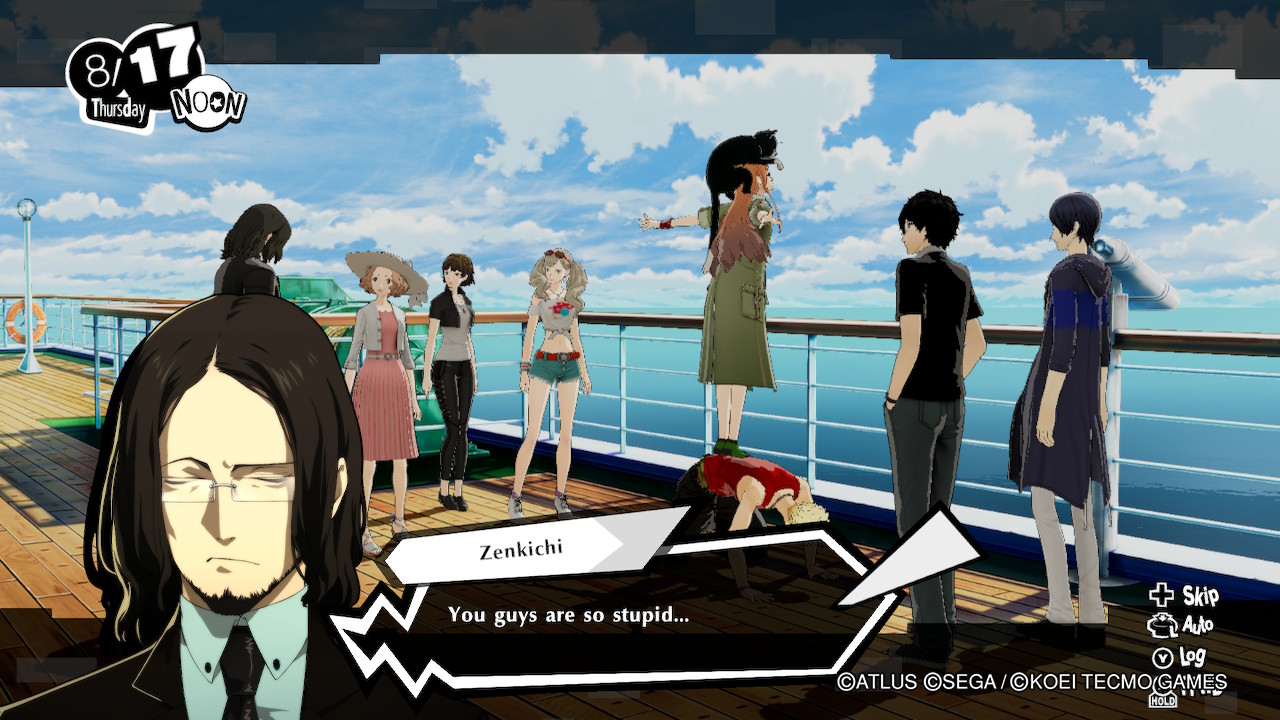
Persona 5 Strikers may live in the shadow of its lauded game of origin, but with a source that good, it’s not such a terrible place to be. Thanks to its Warriors-inspired gameplay and vacation theme, all wrapped up in that signature style, it’s the best series spin-off since Persona 4 Arena.
As a fan of both of its inspirations on their own, I can comfortably recommend it with the only caveat being it’ll be better enjoyed having played Persona 5. Other than some issues with it retreading familiar ground and the absence of a few key pieces, this spin off manages to feel like a genuine sequel to a modern classic.
Consider this review a calling card – Persona 5 Strikers is out to take your heart, and these thieves haven’t failed once yet.
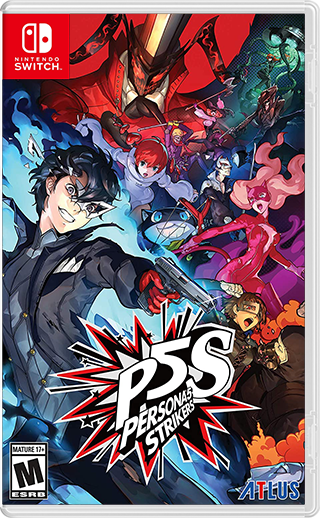
System: Nintendo Switch
Release Date: February 23, 2021
Categories: Action RPG
Publisher: Sega
Developer: Atlus
